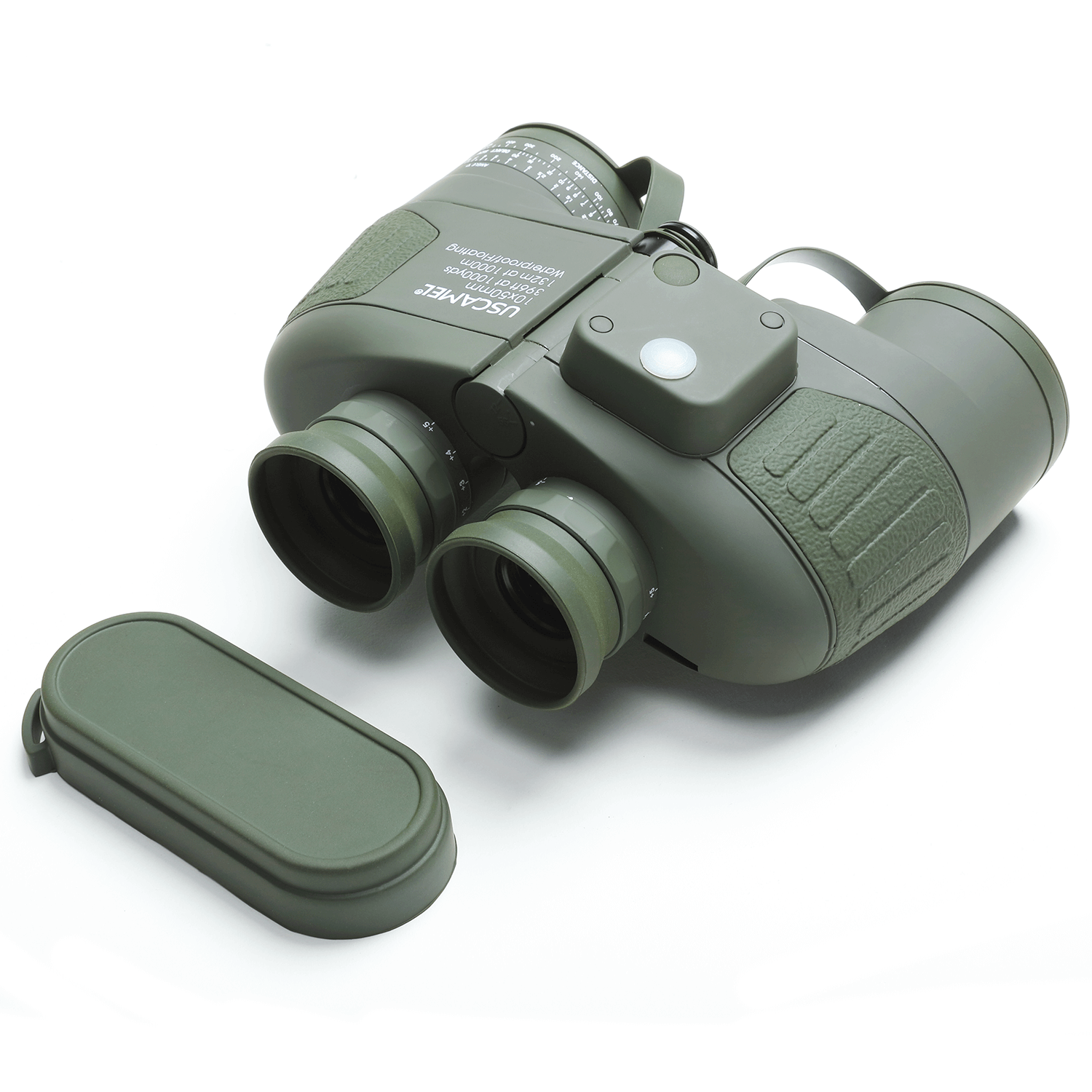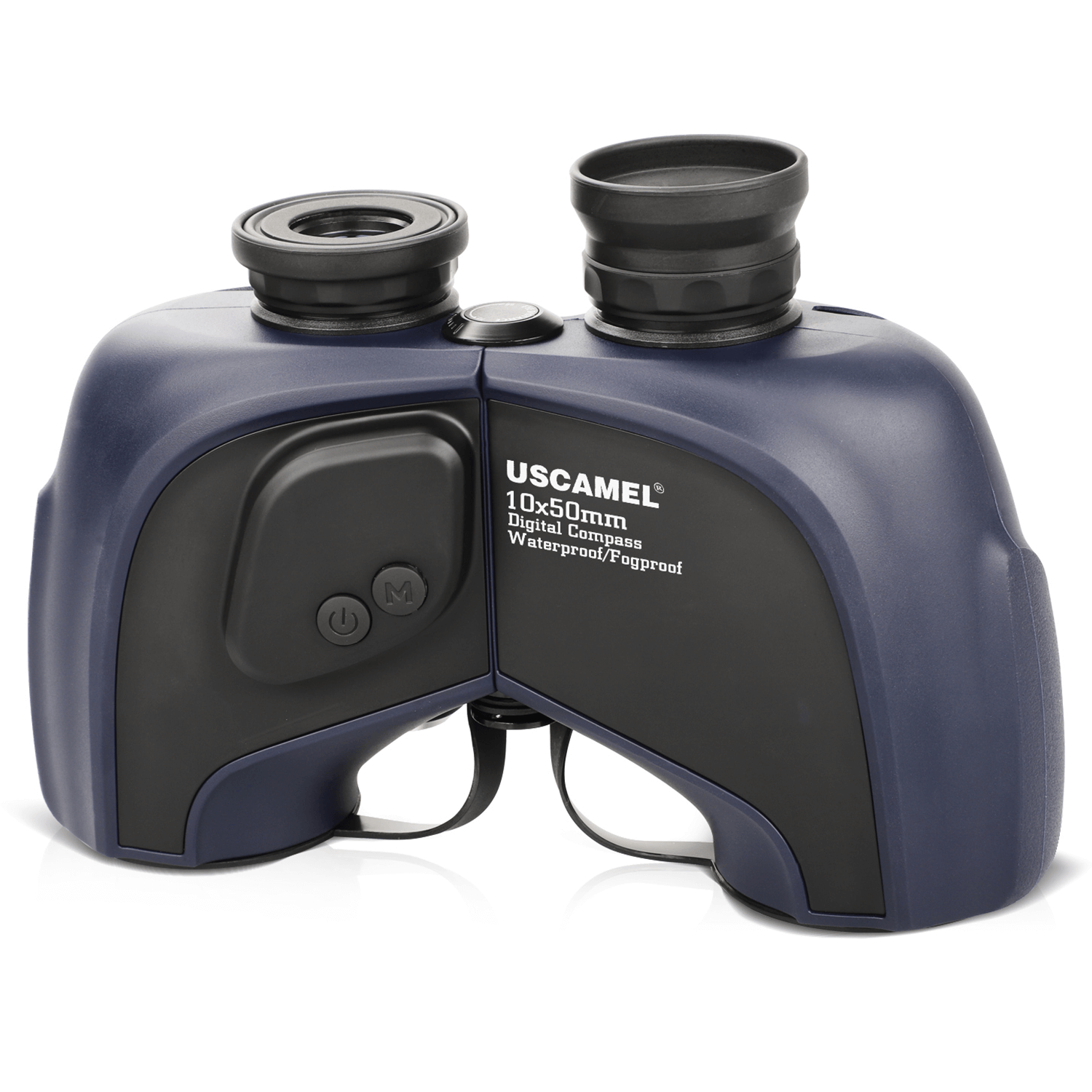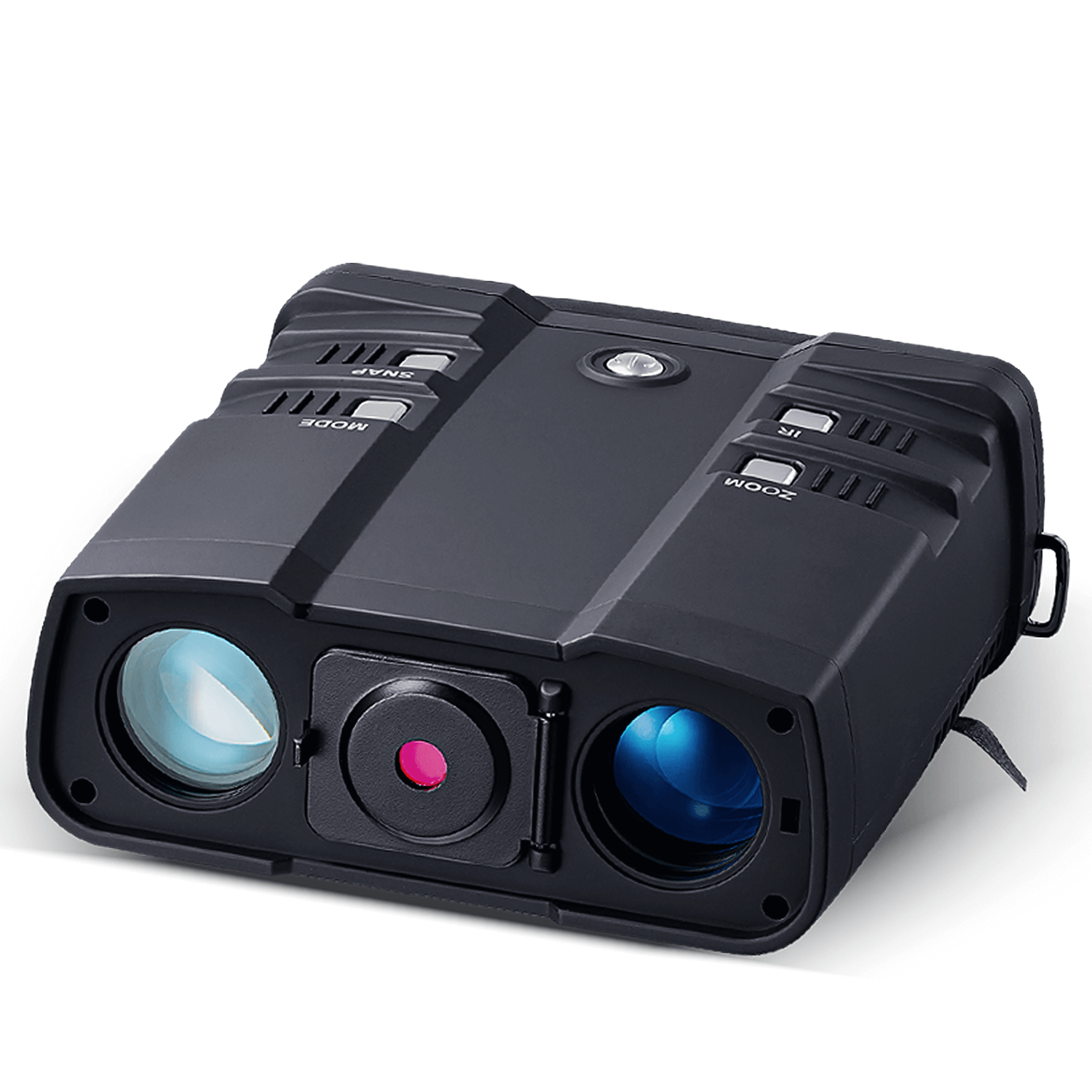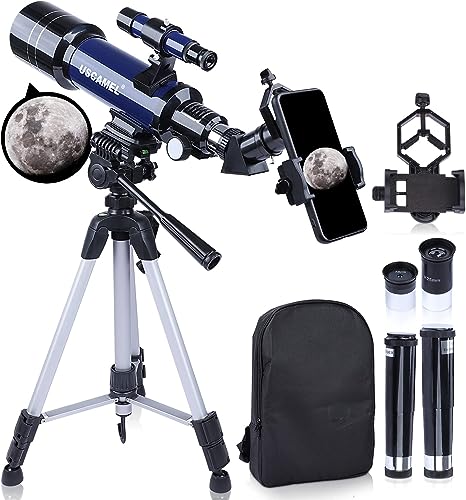Finder scopes
Even with the best telescope in the world, it's useless if you can't locate celestial objects. High magnification telescopes have a narrow field of view, so it's important to have a low-power finder scope. Most finder scopes are straight-through tubes that flip the image and allow you to intuitively look towards the object.
A quality finder scope should have a front lens with a diameter of at least 2 inches (50mm) to let in enough light for locating faint objects. The magnification of the finder scope should be between 7x and 9x.
To align your finder scope with your telescope, do it while there's still light outside using a distant object such as the top of a telephone pole. This is easier to do because the objects you'll use for alignment won't be moving, unlike the stars.
Star diagonals
Due to their design, refractors typically require a star diagonal. This optical component bends the light from your target at a 90° angle into the eyepiece. Without it, observing objects high in the sky can be uncomfortable. To use a star diagonal, it is inserted into the telescope's focuser and the eyepiece is inserted into the star diagonal.
Lights
To use Astronomy magazine or a star chart at deep night, you'll require light. Red light is the most suitable as it has the least effect on your night vision. However, even red light can be too bright and hinder your observation through the telescope by requiring your eyes to re-adapt to darkness. Therefore, an adjustable flashlight is the best option.
Power supplies
If you observe from a location with alternating-current power, consider yourself lucky. The rest of us need some form of portable power. With the right adapter, you can use your car's battery.
Another option is a dedicated power supply. Some power supplies, such as those with a 17 amp-hour battery, have plenty of power for several all-night sessions. They may also include two 12-volt DC car-style outlets, an AM/FM radio, a siren, a removable red-filtered flashlight, and a white spotlight.
Binocular tripod adapters
A useful accessory, the binocular tripod mount enables you to attach your binoculars to a standard camera tripod. This provides two benefits. First, it frees you from holding your binoculars for extended periods. Second, it allows you to easily show others what you're observing without any instructions except to "look through here."
Filters
To enhance your observing experience through a telescope, filters can provide greater detail. Two types of astronomical filters are color filters, which improve planet viewing, and light-pollution reduction (LPR) filters, which decrease man-made light to allow for better nebula viewing. These filters attach to the threads that manufacturers place in the eyepiece barrels.
Color filters
Color filters for astronomy enhance the view even with low-quality telescopes by increasing contrast between different colored areas on planets or in their atmosphere. The edges of these filters are labeled by manufacturers, but their light transmission can be determined by looking at or through them. Larger telescopes work better with color filters because they capture more light. For instance, a violet filter only allows 3% of the light through, requiring a large telescope to observe details. If you have a small telescope, a light blue filter might be better since it allows 73% of the light through and makes objects look brighter, albeit with less dramatic effects.
Light pollution reduction (LPR) filters
LPR filters operate by blocking the specific colors produced by many outdoor lights, such as yellow light from high-pressure sodium-vapor streetlights or blue and green light from mercury-vapor lamps, while allowing other colors to pass through. However, LPR filters are not a complete solution since they don't effectively reduce the effects of car headlights and incandescent bulbs, which emit all visible colors. Therefore, you still need to be selective in choosing your observing location.
Moon filters
A specialty filter known as a "neutral density filter" reduces the amount of light without altering any colors. It allows between 1 percent and 80 percent of the light through, with lighter filters typically used for the planets and darker ones for the Moon, which reflects more of the Sun's light.
These are just the accessories we talked about, you may also need a variety of other outdoor equipment, please shop according to your needs.




